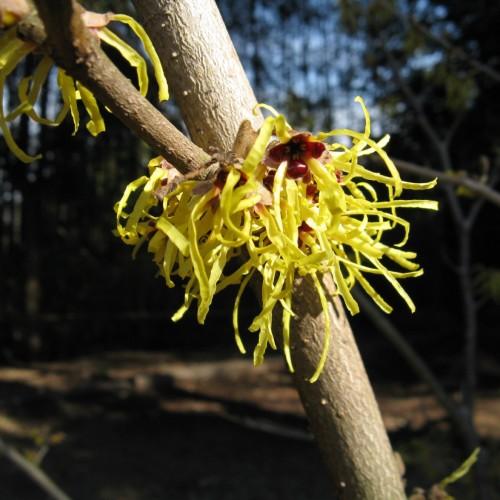
witch hazel
Hamamelis intermedia 'Brandis'
Cycle:
Perennial
Watering:
Average
Hardiness Zone:
5 - 8
Flowers:
Flowers
Sun:
Full sun,part shade
Leaf:
Yes
Growth Rate:
Low
Maintenance:
Low
Drought Tolerant:
Yes
Care Level:
Medium
watering
Witch Hazel (Hamamelis intermedia 'Brandis') should be watered regularly during the summer months to ensure it stays healthy and looks its best. It is important to water this plant deeply and thoroughly, but to avoid overwatering. For best results, water approximately once a week in summer and reduce this to once every 2 weeks in winter. However, depending on the soil and climate, adjust the frequency and amount of watering as needed. In some cases, it may be necessary to water as often as every 3-4 days in the summer. Soil should be monitored to determine when watering is needed. It should be slightly moist and will dry quickly.
sunlight
Witch hazel (Hamamelis intermedia 'Brandis') is a deciduous shrub native to North America. It thrives best in full sun, but can also tolerate part shade. The shrub prefers moist soil and will benefit from an additional deep watering during extended periods of dry conditions. It is important to ensure that the root system of this plant is not allowed to dry out. Witch hazel can tolerate both full sun and part shade and will generally do well in 6 to 8 hours of full sunlight each day. However, for optimal growth, it should receive direct sun for at least half of the day. The hours of sun needed for this plant species will depend on the climate of the area in which it is planted. In cooler climates, afternoon sun is best; while in warmer climates, it should receive filtered morning sun or fall into the partial shade range.
pruning
Witch hazel, or Hamamelis intermedia 'Brandis', can be pruned in early spring. Generally speaking, it's best not to prune hard-wood plants such as Witch Hazel as they bloom in the fall. Prune out any dead, diseased or damaged branches then thin out old, leggy, or weak branches. Removing up to 1-third of the oldest branches is usually recommended to promote new growth and promote blooming in the fall. Make sure to leave plenty of green vegetative growth. Pruning should be done shortly before the plant begins to resume growth in the spring.
